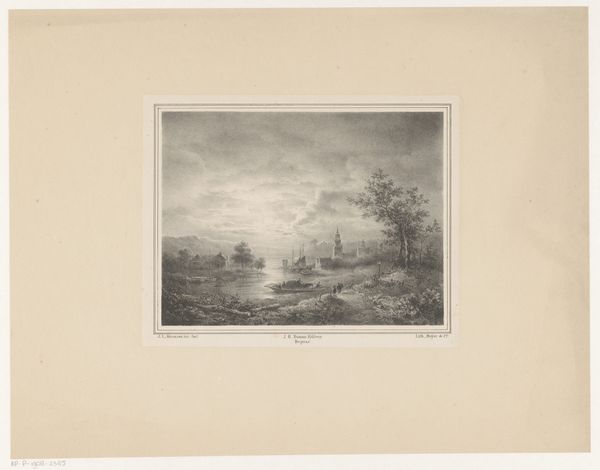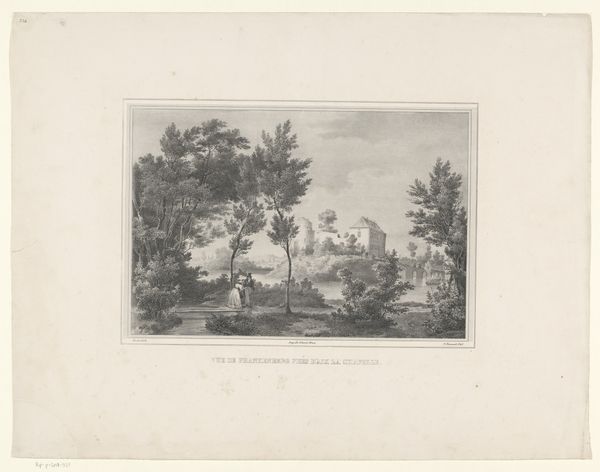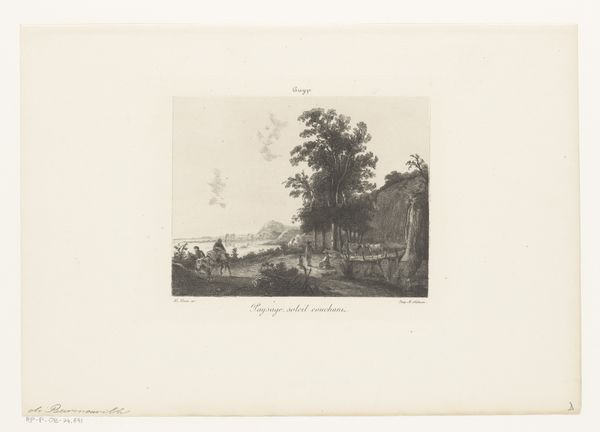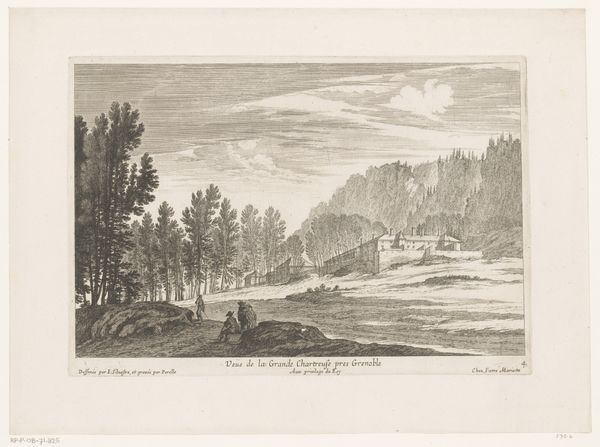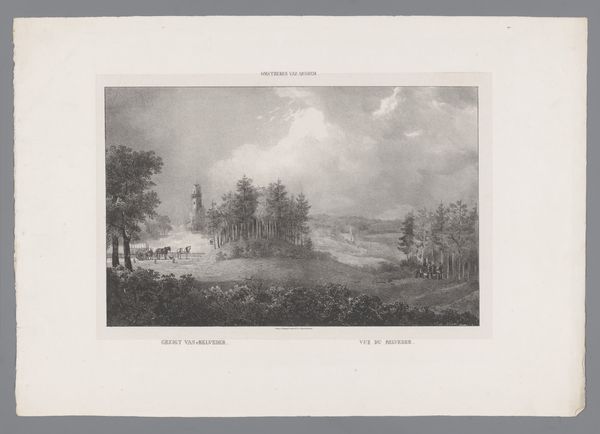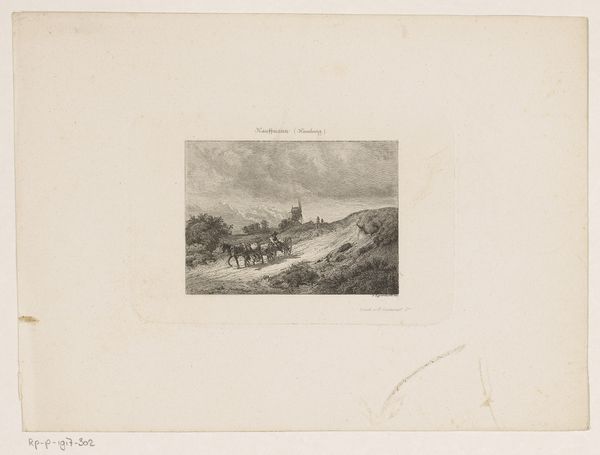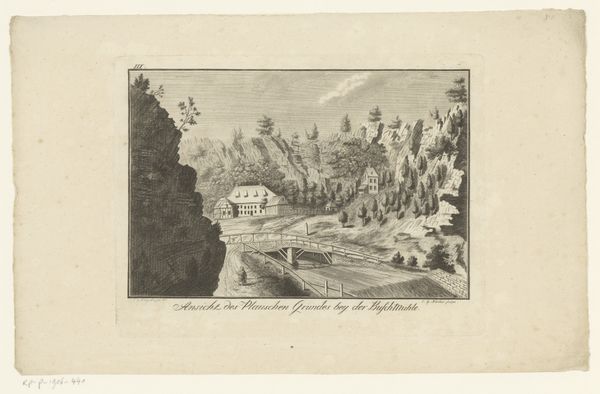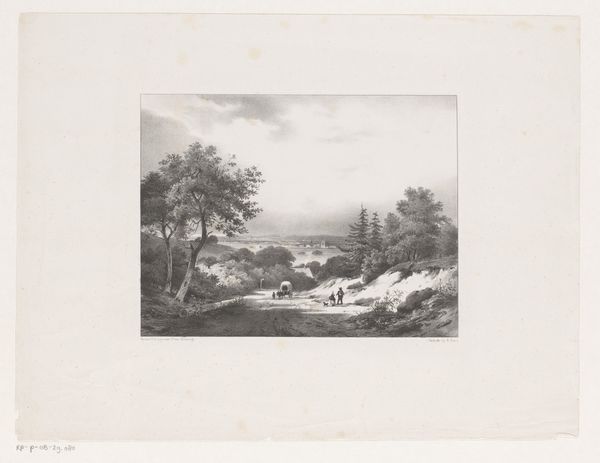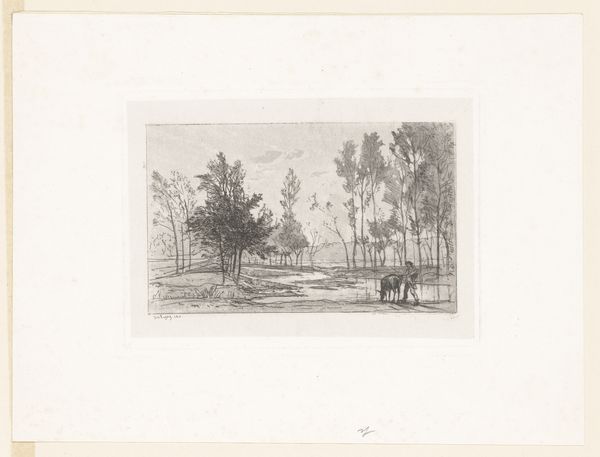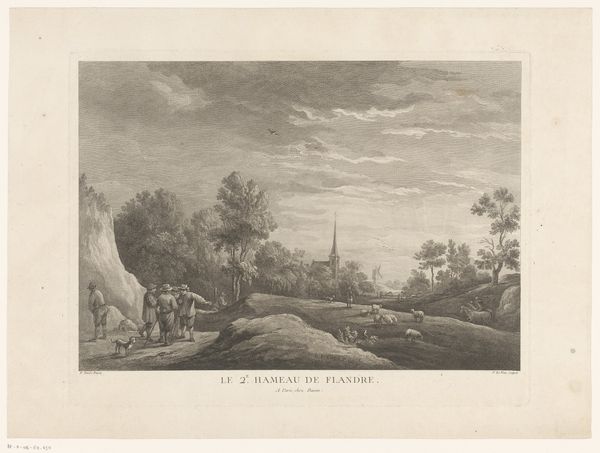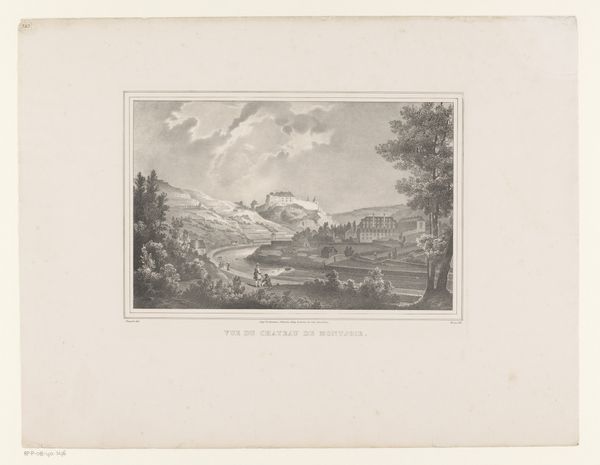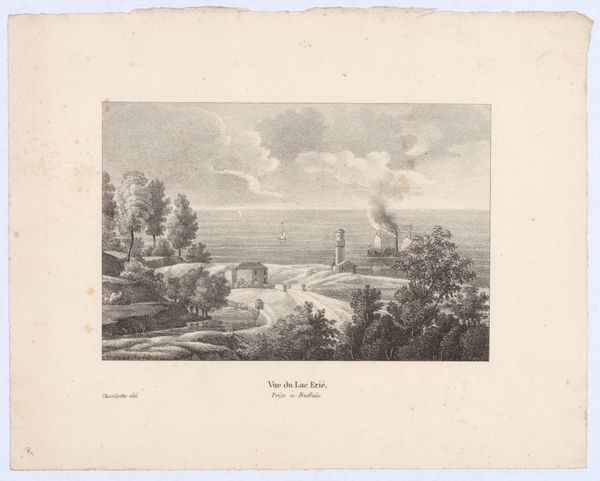
drawing, print, etching
#
drawing
# print
#
etching
#
landscape
#
romanticism
#
line
#
cityscape
#
watercolor
Dimensions: height 240 mm, width 310 mm
Copyright: Rijks Museum: Open Domain
Curator: This etching from sometime between 1815 and 1830, now residing here at the Rijksmuseum, is entitled "Landschap met watermolen van Nimi bij Mons" which translates to "Landscape with Watermill of Nimi near Mons," created by Otto Baron Howen. Editor: Ah, the peace of the countryside…though rendered in monochrome, it's a scene that whispers of quiet industry and harmonious balance. Do you think that initial contrast interests Howen? Curator: Quite possibly. The meticulous lines really carve out distinct planes, almost like a stage set, don’t you think? The watermill firmly in the foreground, a small, romantic, human tableau to the side, with the distant city on the hill as backdrop. There's a sense of carefully ordered space here. Editor: Definitely deliberate, I think! Note how he guides our eye. The composition hinges on the strong diagonals, doesn't it? From the watermill’s roofline to the gentle slope leading toward the distant Mons. It provides not only a frame, but that strong vector which pulls us into the picture and keeps us within its orbit. Curator: And it is certainly framed; literally, within the borders of the etching, and figuratively by those carefully placed trees which echo the verticals of the buildings. The details on the buildings, particularly the windmill, indicate a painstaking attention to structure…yet there is something about that sky…a dreamy wash. Editor: Ah yes, that romantic impulse sneaking through. It’s like the whole scene is slightly veiled, softened perhaps, by memory. Even the details of the city in the distance lack crisp resolution. They're present but muted. So…is this a faithful record of a place, or is it Howen’s emotional imprint of it? Curator: Well, I lean towards the emotional resonance – something that aligns so strongly with the Romantic tradition! Those small figures, too. What are they thinking? Are they observers like us? Does Howen paint them small to suggest the overpowering feeling of nature and their feelings towards their urban neighbor? Editor: Excellent! Perhaps the small figures are meant to resonate both our place and his. Each person who looks at this work occupies that emotional place, caught between nature and city! Curator: So, as we step away, maybe we’re not just looking at a landscape, but a reflection of our own relationship with the places we call home. Editor: I suppose that ultimately, a good landscape is always more than just land. Thank you.
Comments
No comments
Be the first to comment and join the conversation on the ultimate creative platform.
